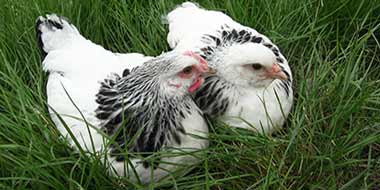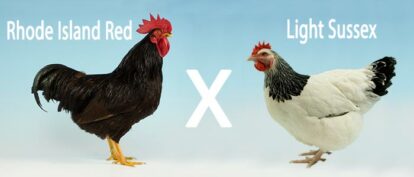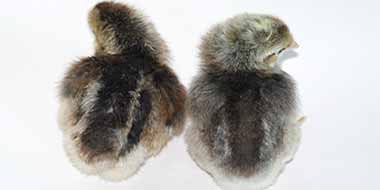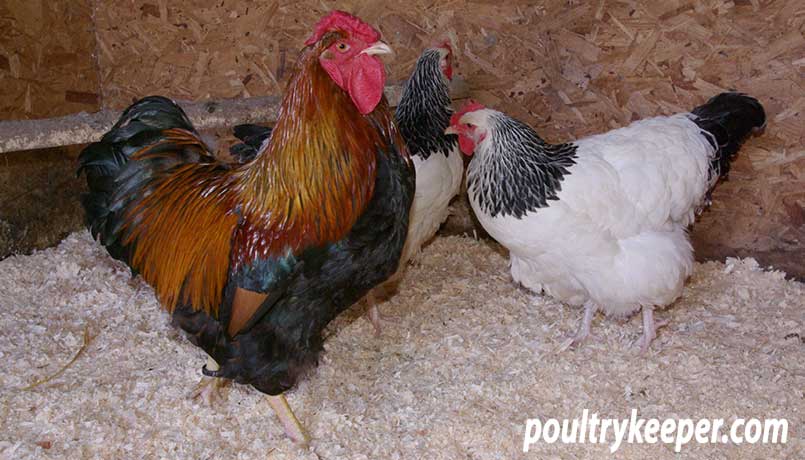
Crossing genetically gold and silver birds can result in useful sex-linked crosses, where day-old chicks can be identified as male or female. Still, it only works one way around, and there are often questions about the offspring they produce. In this article, Grant shares some frequently asked questions on sex-linked crosses and their subsequent offspring.
I recently received an email from a breeder who wanted to get to grips with the sex-linked crosses and what the subsequent offspring can go on to breed. This is a subject I have meant to cover for a while, so this is a good opportunity to clarify some points.
Red cockerel to white hens sex-linked crosses
I hope you don’t mind me emailing you. I always read your articles in Country Smallholding magazine. I recently bought your book “21st Century Poultry Breeding“, but I’m currently struggling to find the answers to a couple of questions I have regarding the breeding on from the offspring of a sex-linked cross and thought you’d be the man to ask.
I currently have a group of growers from a red/white sex link cross. Would the red female offspring breed true when crossed back to a pure red cockerel, or would they throw out any white offspring?
Answer
This question could and should raise many other points. In terms of ‘breeding true’ from a genetically gold point of view, then yes, they should. However, future generations may throw out cream-coloured birds (if the original silver variety you used happened to be carrying the recessive cream gene). Because the original red male isn’t a likely carrier of that gene, then crossing him back to his daughters shouldn’t yield any silver / cream birds.
As for the ‘red’ part breeding true, if you are talking about the Mahogany gene in Rhode Island Reds, then the first-cross females won’t be pure for it, so you can expect to get about half Mahogany and half the same colour as the females when you breed back to the original red male.
Plus, you might pick up the ‘dilute’ gene from the original silver female, so that will affect the saturation of colour and make it difficult to get back to a deep red Mahogany.
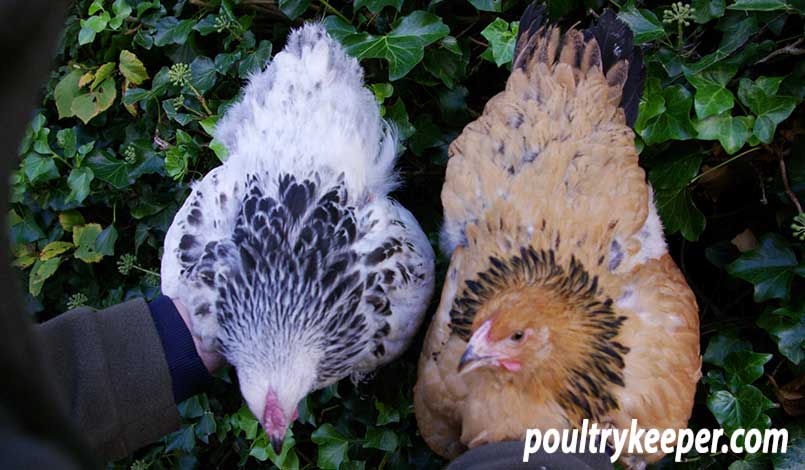
White cockerel to red hens non-sex-linked crosses
I have a group of growers from the opposite ‘non-sex-linked cross of a white cockerel to red hens. They are white-looking cocks and hens and rusty coloured cocks and hens. Am I correct in thinking that the white-looking hens would breed true if I bred them back to a pure white cockerel? Also, would the white-looking cockerels breed true if bred back to pure white hens? And what would be the outcome of a sibling cross between these impure but white-looking birds be?
Answer
This is interesting. When you say ‘white’ cockerel, presumably you mean silver – such as Light Sussex? The ‘rustiness’ in such offspring can vary and this is down to other genes which may affect the visual appearance (phenotype) of each bird. However, what you do know is that all the offspring from such a cross each carry 1 dose of the silver gene.
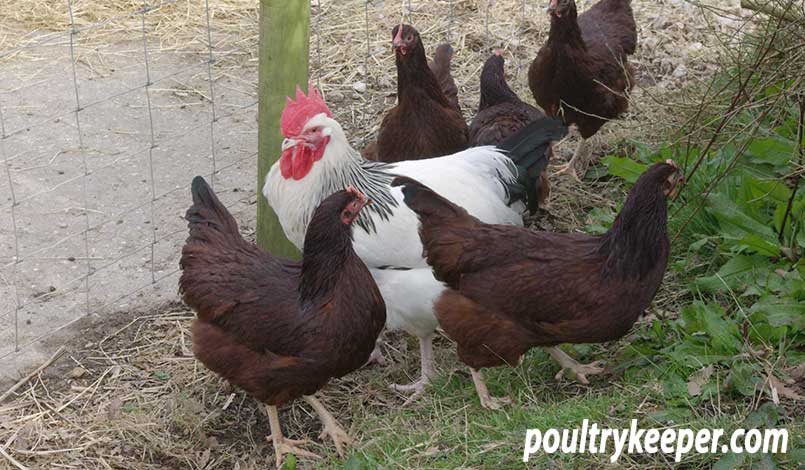
You ask: ‘Would the white-looking hens breed true if I bred them back to a pure white cockerel?’
The answer, again, comes down to whether that white cockerel is a known silver – such as Light Sussex. In that case, yes (although the markings would be severely affected), but the action of ‘locking in’ the silver gene in cross 2 means any subsequent offspring would have to be pure for the silver gene, if nothing else.
You also ask: ‘Would the white-looking cockerels breed true if bred back to pure white hens?’
The answer to this one is ‘no.’ You would get 50% silvers (male and female), 25% Impure males (as the father), and 25% gold females. However, can you tell the pure males from the impure males?
Your last question: ‘What would be the outcome of a sibling cross between these impure but white-looking birds?’ The same results as the question before it. If a female carries the silver gene, then she IS silver – she can only carry 1 dose because it is sex-linked (and Dominant – but that only refers to males when talking about sex linkage). So, when you say ‘pure,’ a female can’t really be pure for sex-linked genes, and so that should give you your answer.
Which breeds are silver and gold?
A white bird is a white bird. It is not guaranteed silver! It MAY be silver, but you don’t know without testing it by crossing to a gold-coloured bird and monitoring the results.
So, to help you with sex-linked crosses, which breeds are silver and gold? – this list should help you to remember:
Genetically Gold | Genetically Silver |
| Gold Sebright | Silver Sebright |
| Partridge, Gold Laced, Buff, Columbian Wyandotte | Silver Pencilled, Columbian, Silver Laced Wyandotte |
| Buff-Columbian, Gold Brahma | Dark, Light Brahma |
| Gold, Partridge Silkie | |
| Brown, Buff Leghorn | Silver Duckwing, Columbian Leghorn |
| New Hampshire Red | |
| Welsummer | Silver Duckwing Welsummer |
| Gold Campine | Silver Campine |
| Gold-Pencilled / Spangled Hamburgh | Silver-Pencilled / Spangled Hamburgh |
| Derbyshire Redcap | |
| Partridge, Buff Cochin | |
| Gold, Yellow-Partridge Dutch | Silver Dutch |
| Barnevelder | |
| Buff, Partridge Pekin | Silver-Partridge Pekin |
| Wheaten, Brown-Red, Black-Red, Creole Game Fowl | Silver Duckwing Game Fowl |
| Speckled, Buff, Red Sussex | Light Sussex |
| Vorwerk | Lakenvelder |
| Dark Indian Game | |
| Red Dorking | Silver-Grey, Dark Dorking |
| Gold Appenzeller | Silver Appenzeller |
| Rhode Island Red |

